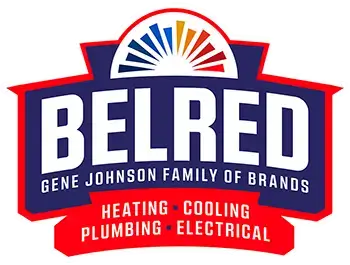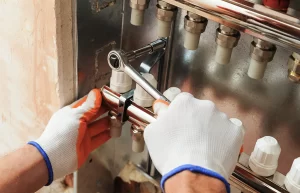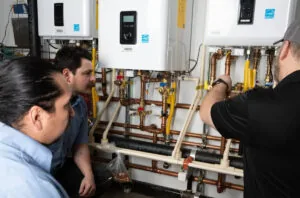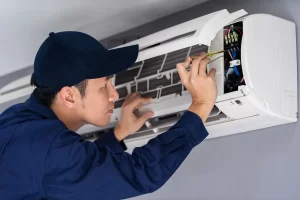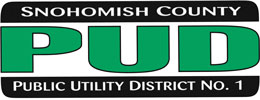As the crisp fall air settles over Seattle and the greater Pacific Northwest, it’s a good time to turn your attention to one of the most vulnerable parts of your home: your plumbing. When temperatures drop, even a small crack or neglected pipe can turn into a costly plumbing emergency. Preparing your plumbing for cold weather isn’t just about avoiding headaches—it’s about safeguarding your home’s comfort and efficiency all winter long.
At BelRed Heating, Cooling, Plumbing & Electrical, we’re passionate about helping you keep your home safe, warm, and well-maintained. With expert care and simple proactive steps, you can winter-proof your plumbing and enjoy peace of mind as the colder months roll in.
Start Outside: Disconnect, Drain, and Defend Your Outdoor Hoses and Faucets
Outdoor plumbing is the frontline in the battle against freezing weather. Many homeowners forget that an attached garden hose can trap water, setting the stage for frozen faucets and bursts.
- Disconnect all garden hoses right away and drain them thoroughly to prevent any lingering water from freezing.
- Shut off the water supply to outdoor faucets from inside your home. Turning this off stops water flow to exterior pipes.
- Open the outdoor faucets to drain any residual water and relieve pressure.
To take it a step further, insulated faucet covers are inexpensive but effective shields against cold snaps, adding an extra barrier between your pipes and the biting air. These simple outdoor protections go a long way in reducing the risk of costly pipe repairs in spring.
Seal Every Nook and Cranny: Keep the Cold Air Where It Belongs
When chilly drafts sneak in through tiny cracks around windows, doors, or where pipes enter your home, they create perfect freeze zones. Cold air circulating near your pipes is a main culprit behind frozen plumbing.
- Walk the perimeter of your home and inspect all visible holes or gaps, especially where plumbing pipes come through walls or the foundation.
- Use caulk or spray foam insulation to seal those gaps tightly.
- Don’t overlook small openings near electrical outlets, under baseboards, and behind appliances — these spots can be easy entry points for cold air.
Sealing up your home’s envelope is like tightening armor around your plumbing. It not only protects pipes but also helps your heating system work smarter, potentially lowering energy bills in the process.
Cozy Up Your Pipes: Insulate and Heat Vulnerable Areas
Exposed pipes in unheated spaces—basements, attics, crawl spaces, and garages—are particularly prone to freezing. Wrapping them properly is one of the most effective ways to prevent winter water woes.
- Apply foam pipe insulation sleeves or fiberglass wrap around every accessible pipe.
- In really cold spots, electrical heat tape can be a smart supplement, gently warming pipes to prevent ice blockages.
- Check your insulation regularly for any wear or gaps and replace it promptly.
Think of it as tucking your pipes into a warm blanket—this simple step is a frontline defense that keeps water flowing smoothly even during the coldest nights.
When the Cold Hits Hard, Let Your Faucets Drip
It might sound counterintuitive to waste water when trying to conserve, yet letting faucets drip is a small sacrifice that protects your home’s plumbing.
- Focus on faucets located on exterior walls or places most exposed to freezing.
- Allow a slow drip from both hot and cold water taps to keep water moving inside your pipes.
- This slow movement dramatically reduces the chances of ice blocking your pipes.
While you want to be mindful of water usage, remember that a dripping faucet is far preferable to a burst pipe and the repairs that follow.
Keep Comfortable Inside: Consistent Warmth Protects Your Pipes
Your home’s heating system plays a vital role in plumbing protection. When temperatures dip, keeping your indoor environment steady is key.
- Maintain your thermostat at a minimum of 55°F (13°C), even when you’re away.
- Opening cabinet doors under sinks lets warm air circulate around plumbing in colder spots.
- If you’re taking a winter getaway, make sure heating is set accordingly or consider shutting off and draining your water system (consult a professional before doing so).
A steady indoor temperature not only safeguards pipes but also helps your furnace operate efficiently, delivering comfort without surprises.
Don’t Forget the Garage and Utility Spaces
Garages and utility rooms often escape scrutiny, yet they can harbor vulnerable pipes and equipment.
- Keep the garage door closed during cold spells to trap natural warmth inside.
- Open cabinet doors to allow heat circulation under sinks or near plumbing.
- Inspect these spaces for cracks or openings that might admit cold drafts and seal accordingly.
Consistent care in these spaces rounds out your home’s defense, turning weak points into strongholds against winter’s chill.
Give Special Attention to Your Water Heater and Sump Pump
Your water heater powers more than hot showers; it’s central to household comfort during winter. Likewise, a functional sump pump can prevent flooding from winter storms or snowmelt.
- A well-fitted insulation blanket on the water heater helps retain heat and improve efficiency.
- Keep the thermostat on your water heater between 120–140°F for the ideal balance of heat and energy savings.
- Test your sump pump by pouring water into the pit, ensuring it activates and pumps water away from your home’s foundation.
- Regularly clear debris from discharge pipes to avoid backups.
These key components work overtime during cold months. Proper maintenance means fewer emergencies and a greater sense of security.
Know How to Act in an Emergency
Despite the best preparations, plumbing emergencies can happen. Being ready means acting quickly to minimize damage.
- Locate your main water shut-off valve and make sure everyone in your household knows where it is and how to use it.
- Learn to recognize early warning signs of frozen pipes: reduced water flow, strange noises, or frost on exposed pipes.
- If you suspect a frozen pipe, never use open flames or high heat devices to thaw it. Instead, call a professional experienced in safe thawing techniques.
Being informed and prepared helps reduce stress and damage when winter tries to catch you off guard.
When in Doubt, Let the Experts Help
Winter plumbing prepping is something you can manage yourself with some effort. But when you’re unsure or face complicated plumbing layouts, professional guidance is invaluable.
At BelRed Heating, Cooling, Plumbing & Electrical, we understand how Seattle-area winters can challenge your home’s plumbing. Offering everything from emergency plumbing repairs to routine maintenance and upgrades, our skilled technicians are just a call away to help protect your home.
Whether you need a thorough winter plumbing inspection or help installing pipe insulation and freeze protection, we deliver solutions tailored to your home’s unique needs. Because we believe in bringing greater comfort and efficiency to every home we serve.
Ready to Keep Your Home Winter-Ready?
Winterizing your plumbing doesn’t have to be overwhelming. With simple yet thoughtful steps, you can help prevent frozen pipes, avoid costly emergency repairs, and maintain the comfort you deserve.
If you want expert advice or professional service to get your plumbing set for the cold months ahead, don’t hesitate to contact BelRed Plumbing. Let our trusted team help you prepare so you can relax and enjoy your home all season long. After all, there’s no place like a warm, well-prepared home when the Northwest winter winds are howling outside.
